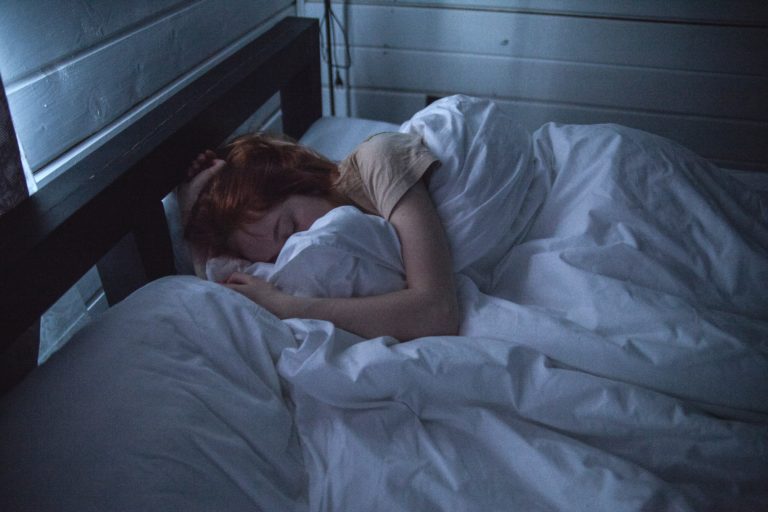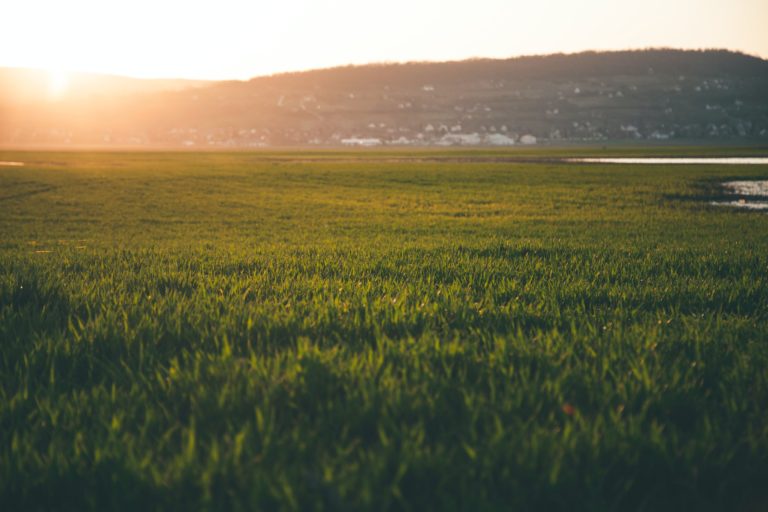Someone who has only experienced the occasional tension headache – perhaps after a stressful day at work, during a bout of the flu, or after sleeping badly on their neck – might wonder why a person would need alternative and complementary remedies for headaches and migraines.
I mean, if you pop an Advil or Tylenol or put a warm compress on your head, you’ll be feeling better in no time, right?
Chronic tension headaches, any form of migraine disease, or one of the other painful varieties of headaches that occur alongside the different chronic illnesses and autoimmune diseases make treatment much more complex.
Chronic headaches and migraines can be some of the most debilitating kinds of pain to experience. If you know, you know.
They’re exhausting physically and emotionally in every way, either cause or coexist with other miserable symptoms, and completely prevent you from living your life when they get severe enough.
While the following information is evidence-based, I’m also coming from a place of real personal experience.
Chronic tension headaches, frequent migraines, intractable chronic meningitis headaches from late stage Lyme Disease – I’ve had them all, and I know how excruciating and disabling they can be.
Medication for chronic headaches and migraines is a tricky phenomenon. For many NSAIDs and prescription headache and migraine medications, if you take them too frequently, they can cause rebound headaches and you’ll eventually build up a tolerance so the medication stops helping the way its intended. Not only that, they can come with a plethora of unpleasant side effects that for some feel worse than the original pain they were trying to treat. Sometimes, medication doesn’t help at all, even after trying every option.
That’s why it’s crucial to have a toolbox of other options when medication isn’t one. Let’s explore some of the best alternative and complementary remedies for headaches and migraines.
Chronic Tension Headaches
Pain from a tension headache occurs in the network of muscles within your face, head, neck, and shoulders.
Chronic stress, low grade inflammation from chronic illness and autoimmune disease, a sedentary lifestyle, clenching or grinding your teeth at night, and poor posture are common contributors to chronic tension headaches.
Not only does long term stress cause your muscles to contract, it also raises the level of the hormone cortisol in your body, which in turn increases inflammation, and inflammation = pain.
As with any symptom in functional and naturopathic medicine, the first step toward effective treatment is finding the cause(s) of your chronic tension headaches.
What helps in the meantime, though?
- Massage.
If you can book an appointment with a massage therapist on a regular basis, that’s an incredibly effective way to manage chronic muscle tension.
You’ll find a variety of massage types you can try out. Something gentle like Swedish massage works best for people with underlying infections who want to avoid the release of toxins that occurs after a more vigorous massage. Craniosacral massage moves the fluid in and around the Central Nervous System (CNS). Lympathic massage promotes the drainage of lymph fluid, which helps support the body’s own detox mechanisms. A deep tissue massage is a more intense therapy that can work out painful muscle knots treat injuries that may cause scar tissue. Neuromuscular massage requires a specific certification for a massage therapist to offer it, but like deep tissue massage, it can be incredibly effective for injuries and painful trigger points that a more gentle massage doesn’t resolve. Bowen therapy involves gently stretching the soft tissues surrounding the muscles and organs of the body to promote pain relief.
Booking regular massages can end up costing quite a bit, however. If your funds are tight, you can invest in a massager tool to use at home instead or in between appointments. Our favorites are this shiatsu massager and this percussion massager. Another cost-effective option is trying a self-lymphatic massage tutorial, to promote healthy lymph movement. - Heat.
A warm compress relaxes tight muscles to provide soothing pain relief. Microwavable compresses don’t stay warm for very long, so we prefer to use a heating pad for the head and neck. It’s the perfect option when you want to settle in your favorite chair after a long day and relieve your head and neck pain at the same time. If you prefer, a warm bath has a similar effect. - Analgesic, Antispasmodic, and Anti-Inflammatory Herbs.
Most people probably think of essential oils first when they’re hear the word “herbs”, but as beneficial as essential oils are, their production creates a lot of plant waste. Hands down, they’re the worst herbal product on the market for the environment.
We do use a few essential oils from Plant Therapy and Eden’s Garden, but I prefer to purchase herbal salves from companies that use sustainable growing and harvesting techniques and sell more traditional preparations like tinctures and oil infusions that don’t create so much plant waste.
A few of our favorite companies that sell herbal infusions and salves include Woodland Essence, Sage Woman Herbs, Mountain Rose Herbs, and Starwest Botanicals. If you’re into topical CBD salves, Silver Moon Nutraceuticals CBD Salve is one of the best.
It’s easy to use herbal infusions, salves, and balms. Simply massage a small amount onto the painful area and enjoy the tingling relief that follows. The analgesic, antispasmodic, and anti-inflammatory chemicals in the herbs get absorbed into the skin transdermally. - Gentle Exercise and Relaxation Techniques.
Gentle exercise and relaxation techniques like yoga, stretching, and somatic therapy can relax your body and restore agility for tight, painful muscles caused by anxiety, chronic stress, a sedentary lifestyle, bad sleeping position, or poor posture.
To prevent poor posture, you can try a DIY posture corrector that retrains the body to sit and stand correctly, as well as work on strengthening your abdominal and back muscles so they better support you. - A Mouth Guard.
For chronic tension headaches that don’t respond to normal home remedies, it might be helpful to look into TMJ disorder.
Grinding teeth and a clenched jaw while sleeping can trigger chronic muscle tension and pain, resulting in headaches that don’t ever seem to go away (you can read a study about these findings here).
Wearing an over-the-counter (OTC) mouth guard at night like this one can help prevent or mitigate jaw clenching, which will help the muscles relax and head pain to finally ease. A OTC mouth guard might not be enough, however, so do not hesitate to seek help from your dentist to treat your TMJ disorder if you aren’t finding relief through home remedies.
Migraines
Migraines are much more than a type of headache, but they involve excruciating head pain in most cases, which is why they’re included in the headache category.
A migraine can have up to four stages and typically lasts 1-3 days. Not everyone experiences all four stages. Migraines can occur sporadically or chronically, depending on each person’s unique case.
- The prodrome. This stage brings on symptoms that warn of an oncoming migraine, such as abnormal fatigue, yawning, neck stiffness, tension headache, or mood changes.
- The aura. This stage involves symptoms that can feel like you’re having a stroke, such dizziness, flashing lights or other visual disturbances, and ringing in your ears.
- The migraine. This stage brings on the classic migraine symptoms of moderate to severe throbbing and often one-sided head pain, nausea (up to and including vomiting), sensitivity to light and sound, lightheadedness, dizziness, and brain fog.
- The postdrome. This stage consists of migraine hangover symptoms like exhaustion and trouble concentrating and can last days after the acute migraine attack lets up.
The jury is still out about the cause of migraine headaches, but scientists are actively searching to find it.
Some research has pointed to the involvement of fluctuating hormone levels that reduce serotonin in the brain, causing inflammation and the dilation of blood vessels in the brain, which temporarily affects brain signals. Triptans, the oldest class of migraine medications, are based on this theory and work by stimulating serotonin, which decreases brain inflammation and makes the blood vessels in the brain constrict, often stopping a migraine. A few popular migraine supplements like Petadolex (PA-free Butterbur with Feverfew) and 5-HTP are also based on this theory.
Newer research suggests the involvement of a protein called CGRP that when elevated beyond normal, which can happen from a variety of triggers, causes inflammation in the meninges of the brain and induces migraine pain. Newer migraine medications like Aimovig and Ubrelvy are designed to block CGRP, thereby reducing brain inflammation and preventing or halting a migraine in its tracks.
One trap migraine suffers easily fall into is relying on non-steroidal anti-inflammatory drugs (NSAIDs) like Ibuprofen and Excedrin too frequently. When you get migraines frequently or chronically and don’t have access to a doctor to help you treat them, you do whatever you can to relieve your pain on your own. The problem is, these drugs cause rebound headaches if taken too frequently, and they eventually stop working when you build up a tolerance from taking them so often.
You can avoid this trap with two key interventions.
1. Learn your triggers and eliminate any you can to reduce your migraine frequency.
Prevention is key to treating migraines with complementary and alternative medicine, because once a migraine has begun it is VERY hard to stop, even with medication.
The good news is, we know a lot of the common triggers for migraine sufferers, so you can try eliminating any you can and adding them back in one at a time to see which affect you.
- Food – MSG, nitrates, artificial sweeteners, aged cheese, yeast, dark chocolate, red wine, and other foods high in histamine and tyramine
- Lack of sleep
- Dehydration
- Lack of food
- Hormonal imbalances
- Normal hormonal fluctuations within the menstrual cycle
- Barometric pressure changes
- Humidity changes
- Perfume and fragrances
When I found and eliminated my triggers, my migraine frequency went down from 3-4 per week to 3-4 per month. Now, I only get them from hormonal fluctuations and weather changes I cannot control.
If you can’t get your migraine frequency down enough by eliminating any controllable triggers, you can try some preventative supplements.
Many people find that a PA-free Butterbur with Feverfew supplement helps prevent migraines because it inhibits blood vessel dilation in the brain.
Other people find Tryptophan or 5-HTP helpful, because they give the body the building blocks it needs to create enough serotonin, which in turn reduces inflammation and constricts the blood vessels in the brain.
*Don’t take both Tryptophan and 5-HTP at the same time, or you could give yourself Serotonin Syndrome, a dangerous scenario where there is too much serotonin in the brain at one time.
If one of your triggers is hormonal fluctuations, some people find a menstrual migraine supplement blend to be effective. These contain ingredients like bioavailable magnesium, Chasteberry (Vitex), and B vitamins to help the body regulate its hormones smoothly throughout the month.
If you’ve tried eliminating your triggers and preventative supplements with no luck in reducing your migraine frequency, you need to talk to your health practitioner about getting a prescription for a migraine preventative.
It’s imperative to reduce your migraine frequency enough that you don’t overuse NSAIDs or your migraine abortive prescription, which would cause rebound headaches and worsen your chronic migraine.
2. Get a prescription migraine medication so you don’t overuse NSAIDs.
Don’t be like me and overuse NSAIDs for two decades before you finally talk to your doctor about getting a migraine abortive prescription (which stops a migraine after it has started rather than preventing it). Prescription medications for migraines work much better than over-the-counter options and don’t come with such a high risk for developing a tolerance/dependence.
If you’re interested in attempting to get through a migraine without medication, one of the few herbal supplements that has been shown to help is Vervain, if you take 1/2 tsp (or 1 tsp of the powder) every couple of hours.
If you can, lying down with an Ice Pack or two in a dark room reduces nervous system input, which makes it easier for your body to withstand a migraine.
Subacute and Chronic Meningitis and Encephalitis
Headaches, often severe, are one of the most common symptoms in Lyme disease and coinfections. They usually stem from subacute and chronic meningitis, or encephalitis if there is a recurring humanherpes viruses like EBV or CMV involved as well.
How do Lyme and coinfections cause subacute and chronic meningitis? Spirochetes and/or coinfection bacteria cross the blood brain barrier, damage the tissues that make up the brain and central nervous system, release neurotoxins, and initiate inflammatory cytokine cascades. Altogether, these infection mechanisms cause chronic meningitis and increased intracranial pressure. This is not often fatal in Lyme and coinfections – though it can be – but causes brutal symptoms through the duration of the disease.
People describe a sensation of the brain swelling, the skull crushing the brain, a squeezing sensation, a stiff and painful neck, a “brain on fire” feeling, a hot and infected sensation, a burning, sensitive, and tingling scalp; throbbing migraine-like headaches, and more.
It’s common for these headaches to not respond to pharmaceutical pain medicine or alternative and complementary therapies, because they aren’t caused by your everyday tension headache or migraine triggers.
The MOST important thing to do for these headaches is treat the infection(s), which can be done with antibiotics, herbal protocols, or a combination of both, with complementary add-on therapies involving nutrition and lifestyle.
However, since it can take a long time to make progress after starting treatment, herbalist Stephen Buhner lists the following herbs for headache relief during treatment in his Lyme and coinfection books.
Vervain
A sedative nervine with analgesic and antispasmodic properties, also known for its anxiety-reducing effect. Dried herb, powdered herb, tincture, glycerin extract.
CBD Oil
The benefits of Cannabis are known far and wide and can bring relief for pain, insomnia, and anxiety. It is federally legal to purchase and consume CBD oil products produced from industrial hemp with a THC concentration of 0.3% or less. State laws vary.
Kudzu Root
Is especially useful in the treatment of several coinfections, but helps with neurotoxicity and headache pain in Lyme and all the coinfections. As a bonus, it’s a wild invasive everyone hates so you can purchase it for next to nothing. Dried herb, powdered herb, tincture, glycerin extract.
Chinese Scullcap
Is an integral part of the Buhner protocols for Lyme and almost every coinfection, because it reduces the inflammatory cytokine cascades that are causing pain and reduces neurotoxicity. Dried herb, powdered herb, tincture, glycerin extract. Dried herb, tincture, powdered herb, glycerin extract.
Milk thistle Seed, standardized
Help the liver with detoxification, which in turn helps with headaches caused by bacterial endotoxins built up in the body.
Elephant’s Head or Lousewort (Pedicularis spp.)
A strong pain reliever that contains phytochemicals with antispasmodic and analgesic properties. Dried herb (check Etsy), tincture.
Ghost/Indian Pipe (Monotropa Uniflora)
A powerful analgesic traditionally used as a substitute for opium, but without the psychoactive and addictive side effects. It can cause extremely vivid dreams for some. It is a rare plant due it being hard to cultivate and being subject to destructive harvesting methods. If you can, it’s better to use an herb that’s not as endangered, but for some, this is the only herb that helps with their pain.
It is the only remedy that gave me relief from my excruciating, intractable chronic meningitis headache that my late stage Lyme and coinfections caused. If that’s the case for you, it’s important to purchase from an herbalist that harvests ethically (check Etsy).
Greater Celandine
An important herb in treating Bartonella, because it reduces the inflammatory cytokine cascades that cause head pain, and it reduces neurotoxicity. Dried herb, powdered herb, tincture, glycerin extract.
Which of these alternative and complementary remedies for headaches and migraines are your favorite? Are there any new options in this post you think you’ll try in the future? Let me know in the comments! I’d love to chat with you there.
This post contains affiliate links. If you choose to purchase a product through one of those links, I will earn a small commission that helps me support my family, at no extra cost to you.
References: The data in this post about headaches caused by chronic meningitis and encephalitis comes from Stephen Harrod Buhner’s Healing Lyme 2nd Edition, Healing Lyme Disease Coinfections: Bartonella and Mycoplasma, and Natural Treatments for Lyme Coinfections: Anaplasma, Babesia, and Erhlichia.
Disclaimer: I am not a licensed doctor and do not diagnose or treat disease. Please do not substitute any information in this educational blog post for the personalized advice of your health practitioner.




